The Xiaomi Mi Note Pro and Mi Note Review
by Joshua Ho on September 11, 2015 9:00 AM ESTDisplay
For those that are well-versed in smartphones, it probably goes without saying why display quality is important. However, for those that don’t spend their lives reading about these issues, it is not necessarily all that obvious what makes a great display. It also won’t necessarily be obvious whether display quality really matters after a certain extent. As we’ll soon see, it turns out that there are a number of factors that influence display quality that won’t be on any normal specification list. There are some obvious metrics to look at like maximum brightness and static contrast, but something like color reproduction is often intensely personal. What looks great to some people might be excessively neon to others. What looks realistic and natural to some might be dull and dead to others.
In order to try and bring some level of objectivity to these issues, we rely on an external professional equipment (spectrophotometer and colorimeter) to quantify our display observations. For our spectrophotometer and colorimeter, we’ve standardized on X-Rite’s i1Pro2 and i1DisplayPro respectively. In order to effectively use this hardware, we also use SpectraCal’s CalMAN 5 with a custom workflow to record data and present it in a useful manner. To try and make our color observations somewhat objective we’ve elected to test color reproduction against the sRGB gamut, which is the standard for all web content and color in general, along with a gamma curve of power 2.2.
Mi Note
Mi Note Pro
In the case of the Xiaomi Mi Note and Mi Note Pro, we see two different kinds of displays from the same vendor. For the Mi Note, a JDI 1080p LCD is used while for the Mi Note Pro we see a JDI FBC20 1440p LCD. Both have a full RGB stripe, so it’s important to keep in mind that an AMOLED display of the same resolution will often have less perceived resolution due to the difference in subpixel arrangement. Subjectively, the resolution difference here is surprisingly small between the two, but I suspect that this is because the Mi Note Pro has a rather obvious ITO grid that can affect display clarity.
Color shifting with respect to viewing angles with both is subjectively relatively low, but there are some problems with contrast decreases/uneven luminance shifts that happen when you rotate the display at a constant viewing angle with something other than pure black on the display. I would say that I can probably count on one hand the number of LCD-equipped phones that don’t exhibit this problem though like the HTC One M9+, iPhone 6, and the LG G4.
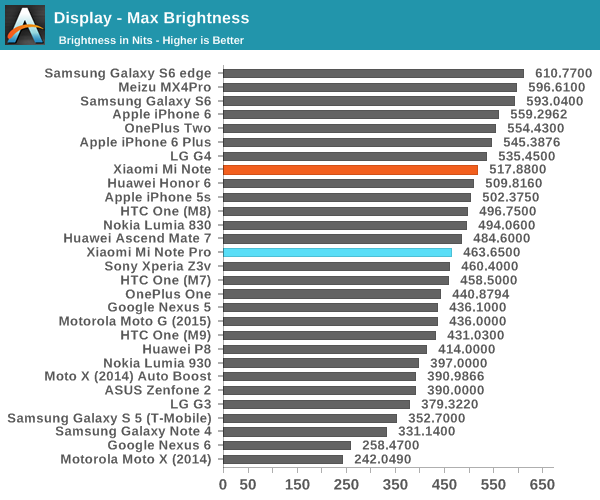
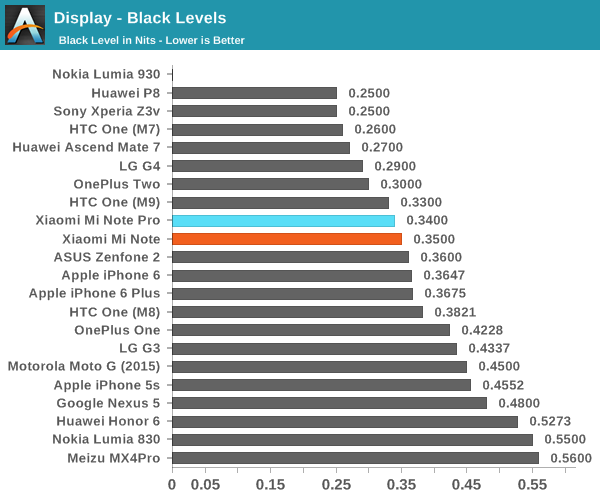
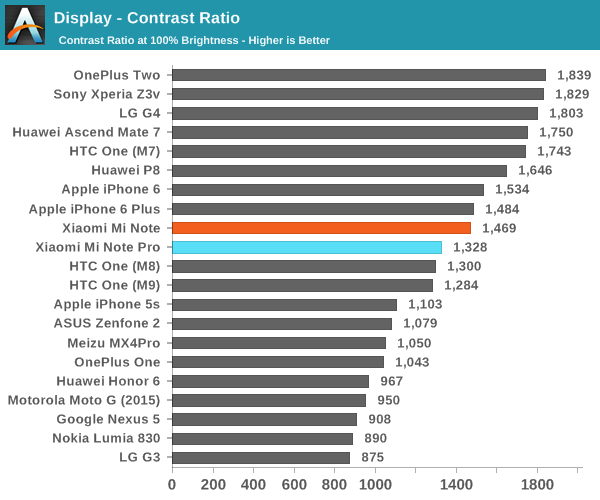
Moving on past some subjective observations, we can take a look at display luminance and contrast, which generally is a strong determinant for outdoor visibility in most cases as reflectance tends to be mostly similar amongst smartphones today. In this test, we can clearly see a difference between the two displays as the 1440p display does end up dimmer with reduced contrast. However, due to the sunlight display feature of the Mi Note Pro in practice I actually found it to have a similar, if not better outdoor visibility when compared against the Mi Note.
For those that are unfamiliar with what Xiaomi’s Sunlight Display feature is, this effectively an implementation of Apical’s Assertive Display technology. This technology is a form of content-adaptive backlight control in which the gamma and some other characteristics of the displayed image are altered in order to increase the visibility of darker aspects of the display, while retaining apparent contrast within the image so it doesn’t look washed out. For those that don’t care about the technology behind it, all that needs to be said is that it absolutely works, and it works incredibly well at improving sunlight visibility.
Mi Note
Mi Note Pro
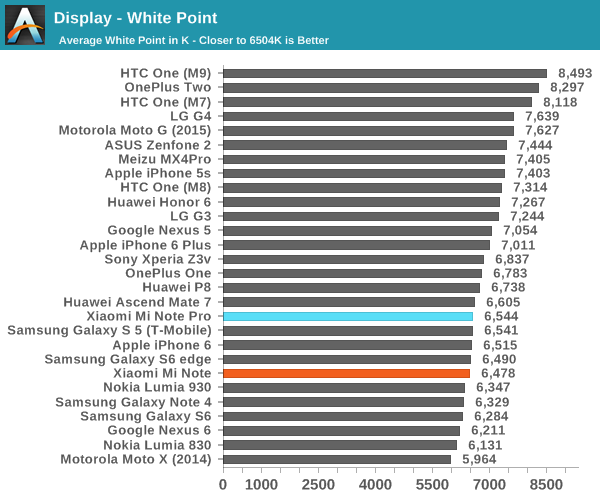
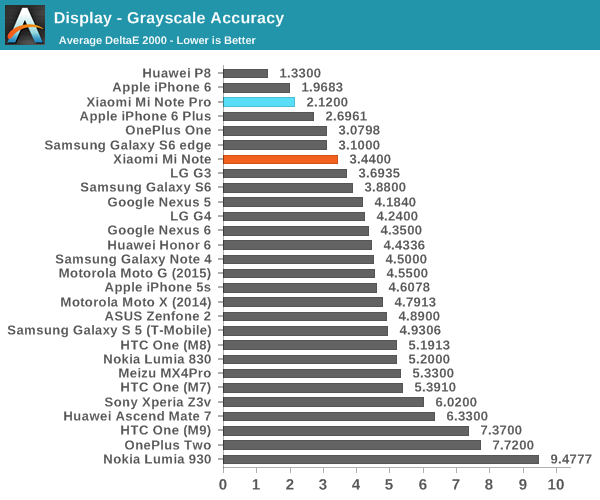
In our grayscale test, the Mi Note and Mi Note Pro were both set to standard contrast, but the Mi Note also required an extra adjustment to the “cool” color temperature as the “neutral” and “warm” were both extremely warm/red. After doing these changes, you can see just how well calibrated the Mi Note and Mi Note Pro are in grayscale. The Mi Note isn’t quite perfectly consistent, but the extra money you pay for the Mi Note Pro seems to have gone into turning good into great. In both cases, it’s interesting to note that the gamma curve is such that gamma is reduced near black, but raised near white, likely done to improve contrast in the near-white region.
Mi Note
Mi Note Pro
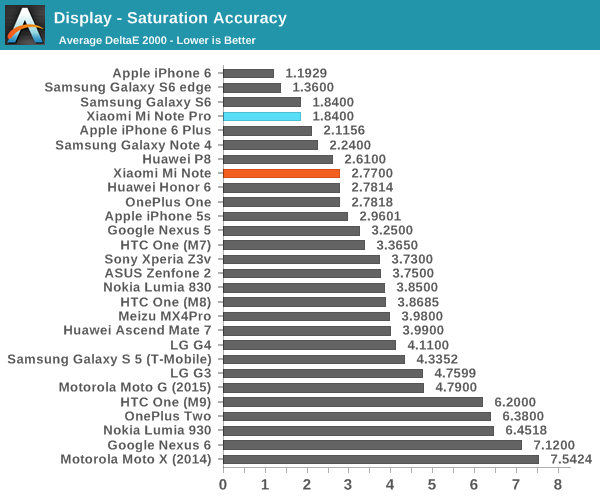
Moving on to the saturation/gamut test, both are fully capable of adhering to sRGB gamut. The Mi Note does have some strangeness going on with the gamut control, but overall calibration is acceptable as average error ends up below 3. The extra money that you pay for the Mi Note Pro at least partially goes into calibration, as the Mi Note Pro has incredibly well-calibrated saturation sweeps in this test, and follows the sRGB gamut very closely.
Mi Note
Mi Note Pro
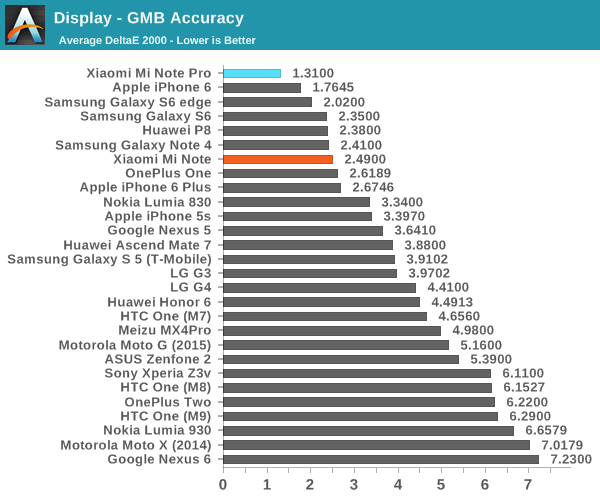
In the ColorChecker test, we see a similar pattern. The Mi Note delivers acceptable color calibration across the board with good hue accuracy, but the Mi Note Pro reaches almost absurd levels of calibration accuracy. There’s really not a lot of reason to improve color calibration past the point that Xiaomi has reached here, which is surprising when a number of OEMs continue to avoid proper sRGB calibrations. The Mi Note Pro is arguably better here relative to the Mi Note, as you get a higher resolution and better color calibration, but the difference in resolution and color calibration could be considered to be relatively minor. Both phablets have great displays with no real reservations.


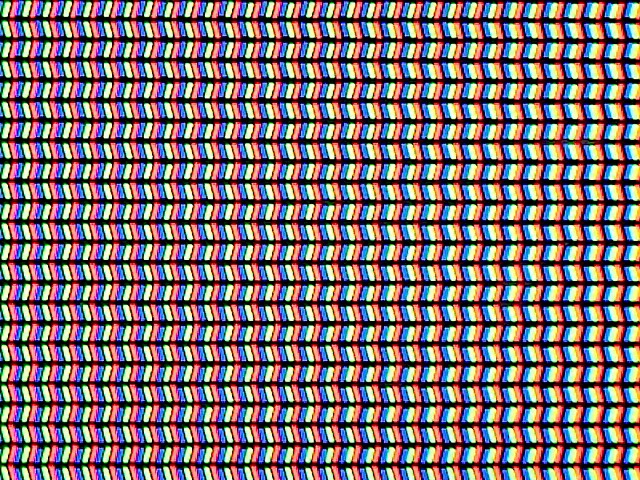

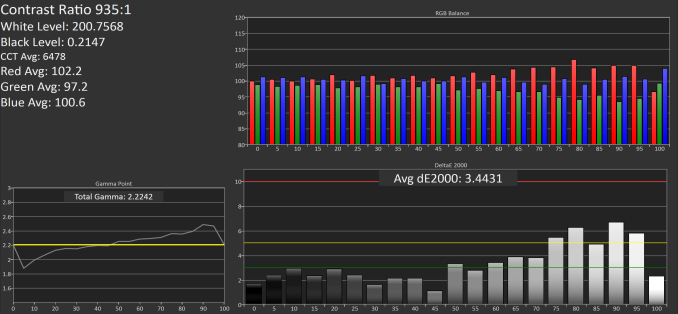

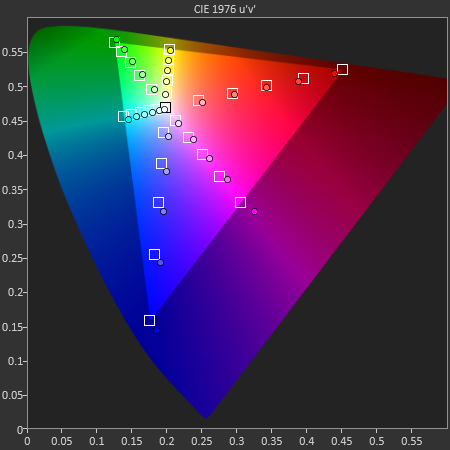
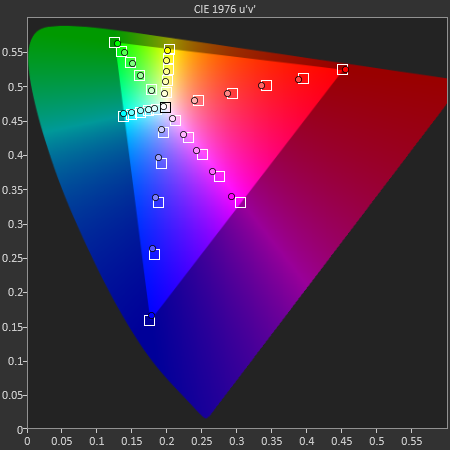
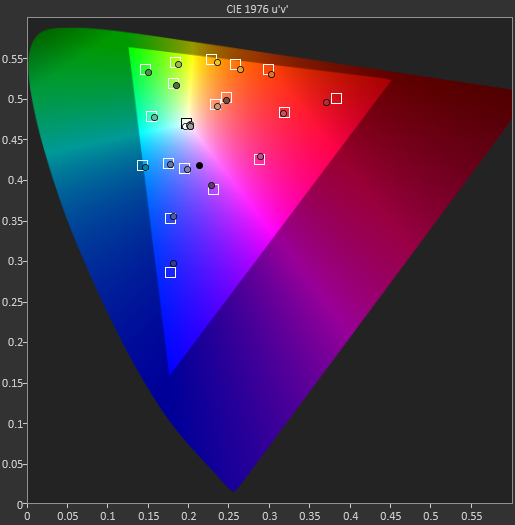
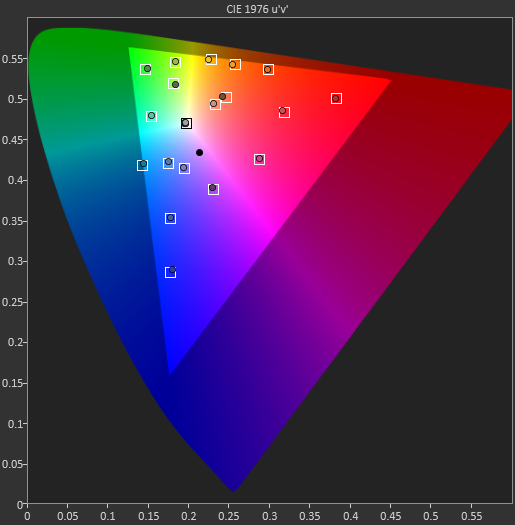








94 Comments
View All Comments
Vorl - Friday, September 11, 2015 - link
Weather it makes sense or not isn't the point. The point is that AT has been a US based review site. If they are going to start changing that policy, then it is reasonable and realistic for readers who are reading it for purchase decisions to be informed at the start of the review that AT is reviewing something out of the ordinary.Now, I can tell how much it has bothered you that AT has been, and as far as I can tell is still mostly US focused.
Perhaps you should seek therapy to help you deal with your feelings of jealousy and inadequacy. Just a thought.
menting - Friday, September 11, 2015 - link
that doesn't make sense at all. AT goes to tons of international trade shows that show products that will not even be in the US. Should they not report on those products at all then? Granted it's not a review, but the logic is still the same.BMNify - Friday, September 11, 2015 - link
Only an idiot will say that facts don't matter, the point that most of Anandtech readership is International is a fact and there is no denying it and it is only logical that they will cover even more International products in the future to the utter chagrin of Redneck, bigoted 'Muricans. Also, LOL at being jealous of redneck 'Muricans, guys like you humour me :)garbagedisposal - Saturday, September 12, 2015 - link
You're an idiot. fact.Yaru - Sunday, October 4, 2015 - link
I checked the "About Anandtech" page, nothing there remotely even says that it only focus on US-based things. If anything it didn't single out any country. If you have the impression that it's US-based then it was your mistake as its not part of their goal.prisonerX - Saturday, September 12, 2015 - link
A bitter, bigoted and uninformative rant that projects all your prejudices onto Americans.You seem to think "westerners" give a toss about what's selling in Europe or anywhere else. Most people just want to know what they can buy for themselves. That doesn't mean they're bad people.
Notmyusualid - Friday, September 11, 2015 - link
Ridiculous.You can even order your kitchen online from China, why not your phone too?
So we shouldn't hear about cool products anymore, because some people reading this would have to import it? I disagree.
geo2160 - Friday, September 11, 2015 - link
You know you can import it, right? I live in Europe and most Xiaomi phones I've seen were ordered online from China.Yaru - Sunday, October 4, 2015 - link
EXACTLY, you can buy phones using this magical thing called the Internet. From worldwide!!!Ryan Smith - Friday, September 11, 2015 - link
I have to admit I'm surprised by some of the comments here, but at the end of the day it's good feedback to have.=)We went into phones with an international mindset from the start. It's why we have mobile editors like Andrei located outside of North America. The good news is that most phones are available worldwide, but we're also not going to hesitate to review phones that don't get an NA release. Someone can still put out a good product and not formally release it in NA, and that certainly is worth a look.
In any case I do appreciate the feedback. We'll work on finding a way to make it clearer what regions a phone is available in for future articles.